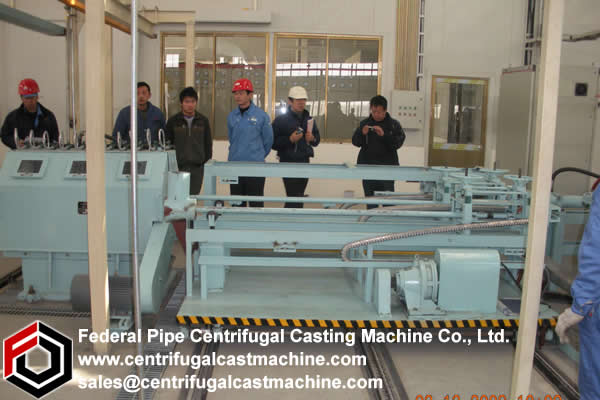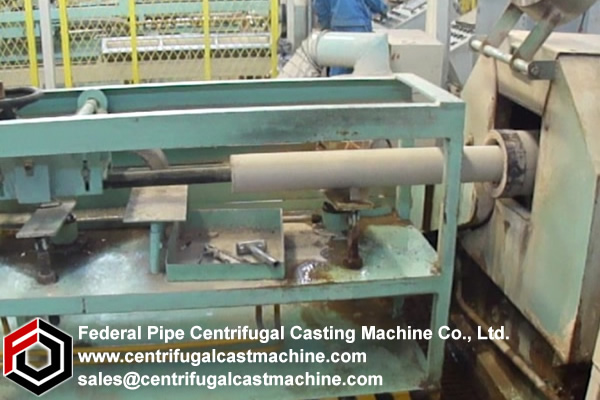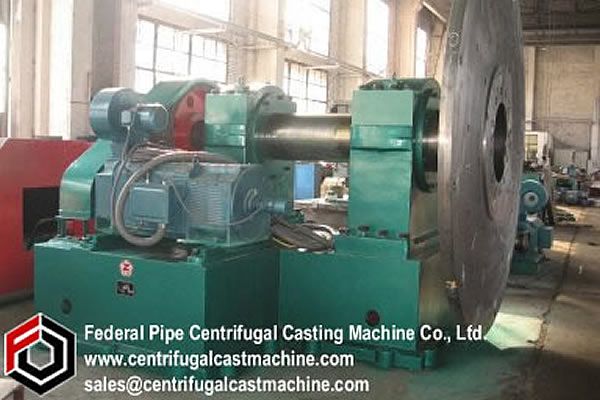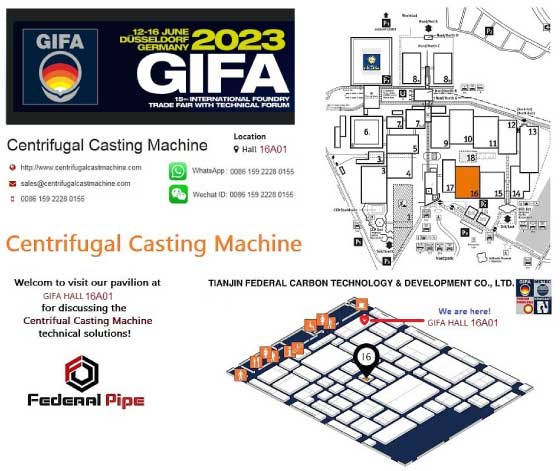improved construction for a centrifugal casting machine such as used in casting gun tubes.
This invention relates to an improved construction for a centrifugal casting machine such as used in casting gun tubes.
It is an important object of this invention to facilitate the manufacture and maintenance of centrifugal casting or other heavy machinery of the type in which a heavy rotor member must be supported for rotary movement about its own axis.
It is a further object of this invention to improve the precision with which such machinery may be initially lined up and placed in operation.
Another object is the provision of a construction which permits removal of the rotor member without necessitating extensive disassembly of the rotor supporting structure.
In general, these objects have been accomplished by the provision of self-equalizing, readily accessible, and adjustable bearing members for the axles of the rollers between which the rotor is engaged, and by the provision of a frame work which facilitates disassembly.
The axact nature of this invention, as well as other objects and advantages thereof, will be readily apparent from an inspection of the accompanying drawings, in which: Fig. 1 is an end elevation, partially in section, of one of the main stanchions of the machine.
Fig. 2 is a sectional plan view taken substantially on the line 2-2 of Fig. 1 with the rotor and rotor trough omitted.
Fig. 3 is a vertical sectional view on the line 3-3 of Fig. 1.
Fig. 4 is a longitudinal sectional view through one roller assembly.
Fig. 5 is a partial elevational view showing a modified form of adjusting means.
.Referring to the drawings by characters of reference it will be seen that the portion of the centrifugal casting machine shown herein comprises one of the two or more main stanchions I within which the rotor 2 is intended to be rotated in the conventional manner. The details of the rotor or the method of driving it are not shown herein as they form no part of this invention. The stanchion is preferably provided with two pair of spaced apart lower rollers 3 and at least one upper roller 4. Each pair of lower rollers is journaled by means to be described in more detail hereafter in an equalizing frame 6, the two frames 6 being rotatably mounted on an equalizing axle 7 suitably supported by the stanchion. The upper roller 4 is journaled in a top frame 5 in substantially the same manner as the lower rollers are supported. The top frame 5 bridges the upper portion of the stanchion I and is provided with an axle 8 which is journaled in the upper portion of the stanchion and about which the top frame may be rotated when the clamping bolt 9 is released from the opposite upper member of the stanchion. Preferably spring washers 10 will be engaged between the clamping bolt and the upper frame 5 to resiliently clamp the upper roller in engagement with the rotor. Obviously, when the clamping bolt is released and the upper frame rotated about its pivot axle to a position as shown in dot and dash lines in Fig. 1, the upper portion of the machine is clear and the rotor may be readily removed therefrom or repairs made upon the upper roller assembly.
Lifting eyes 5a are provided to assist in handling the top frame and a suitable dust cover may also be provided.
Referring more in detail to Fig. 4 it will be seen that each roller assembly comprises a roller axle S1 upon which a roller 3 may be shrunk or otherwise fixed, and which is provided at each end with heavy-duty bearings 12 which may be of the roller or other conventional type, and are conveniently retained on the axle by nuts 13. The outer raceways of the bearings are received in housings 14 and retained therein by inner housing retainers 15 and outer housing retainers 16 secured to the housing 14 by studs 17 or other convenient means.
The outer circumference 18 of the housing 14 is eccentric with relation to the roller axle supported therein and flanges 19 and 20 are provided to limit endwise movement along the eccentric surface. Each housing 14 is rotatably supported on a member (subsequently described) which forms part of the equalizing frame or of the top frame by engagement with suitable bearing members for the eccentric surface 18. The flanges 20 on the housing 14 are preferably provided with gear teeth 21 with which an adjusting pinion 22 is in mesh. The adjusting pinion may be conveniently journaled in the bearing cap 23 and will preferably be provided with a hexagonal head 24 or other convenient means for rotating the pinion. It will be obvious that rotation of the pinion will produce rotation of the housing around the bearing, and that since the circumference of the housing is eccentric with relation to the shaft supported therein, such rotary movement will produce corresponding displacements of the axis of the roller axle II. In this way exact alignment of the rollers may be produced without requiring that the portions of the machine Bs supporting same be machined to a degree of precision which is difficult, if not impossible, of attainment under normal manufacturing conditions. Conveniently, a roller adjusting lock 25 may be releasably secured to the housing 14 and provided with teeth engaging the gear teeth 21 to secure the housing in any desired adjusted relation.
http://www.centrifugalcastmachine.com/Iron-Pipe-Centrifugal-Casting-Machine/81.html
